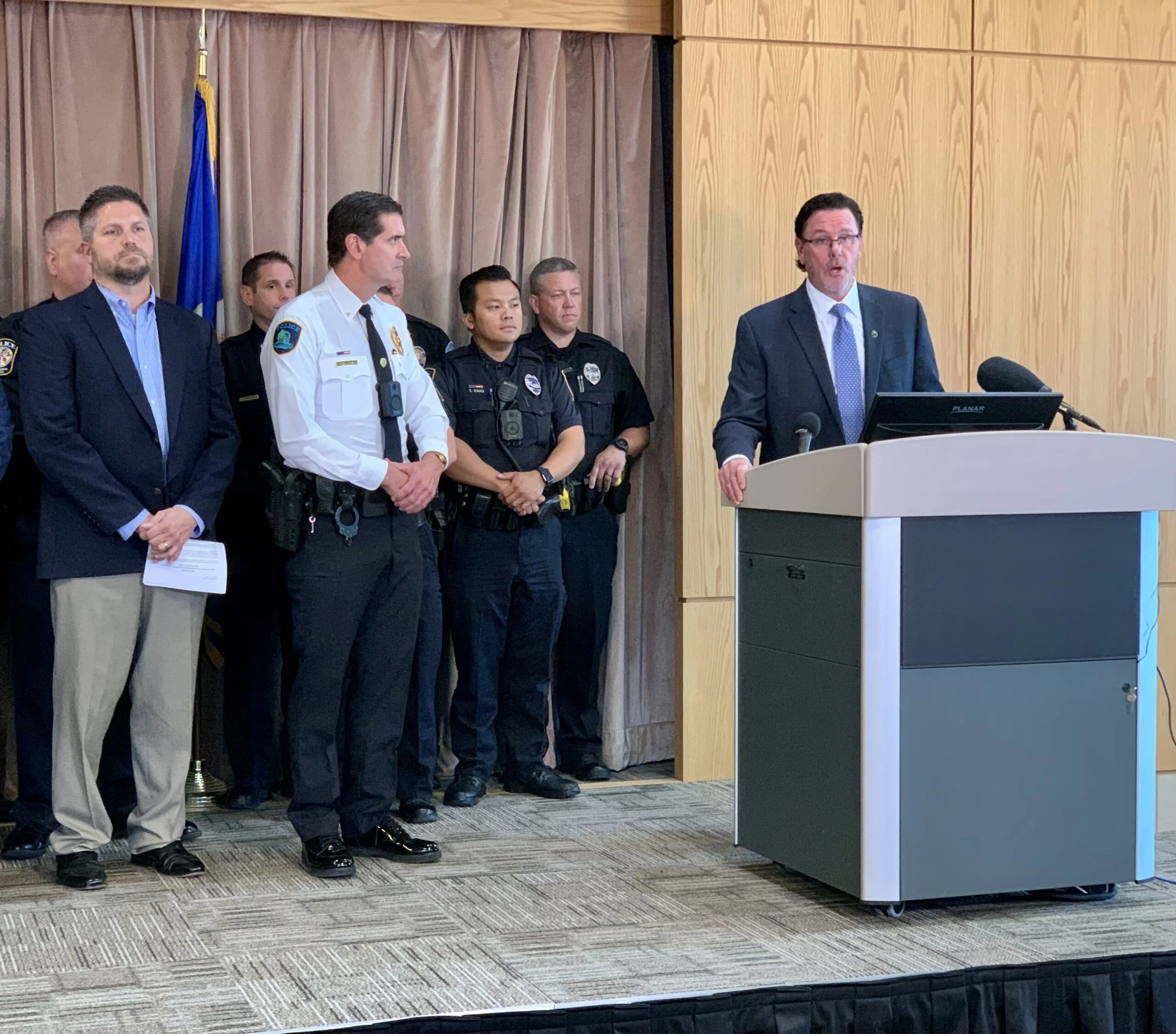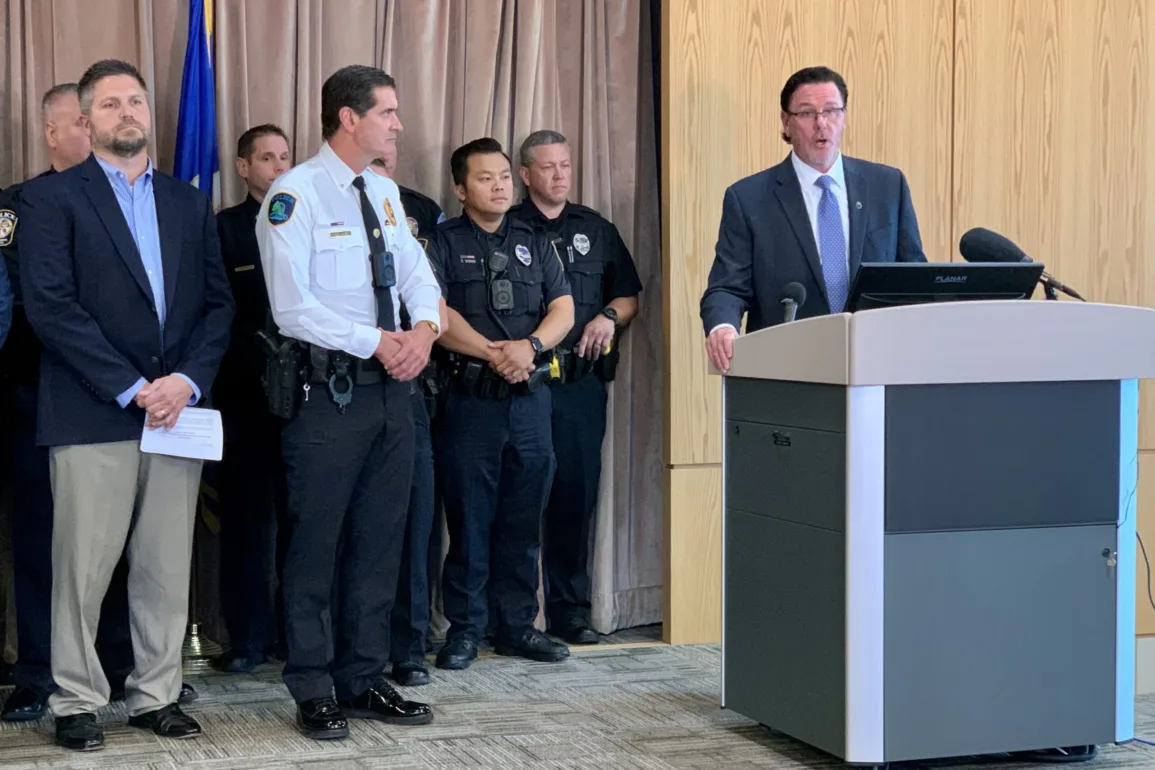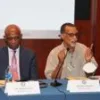
The police are likely coming back to schools — without a special legislative session or a change in the law — revealing what many of us suspected: This “debate” was a lotta sound and fury, signifying nothing.
A hackneyed Shakespearean phrase, but a true one regarding the past month of frequently phony arguments about whether police in schools should be able to hold students in a prone position, meaning on their stomach.
I have to hand it to Republicans and their allies in the police lobby. It was a cunning campaign, timed to the beginning of the school year, following a few years of pandemic-induced anti-social behavior among kids. It’s been a slow and steady wind up of the fear dial. Every few days, another department — often in a battleground legislative district — announced they were pulling police out of schools.
Republicans — whose alignment with the police lobby is now roughly equivalent to labor unions and Democrats — declared a crisis.
“Gov. (Tim) Walz should not wait for somebody to get hurt to call a special session. We need our school resource officers back NOW,” said Rep. Pat Garofalo on Twitter, who is one of the more politically shrewd Republicans in the Legislature.
Well, that sounds ominous. But the truth is a lot of school districts don’t even use cops in schools. (Would love to know how and when we allowed them to sneak in the re-branded “school resource officer.”)
There’s no recent data on the portion of Minnesota schools with police, but it’s likely no more than one third. The most recent federal data show about 46% of public schools nationwide have an SRO present at school at least once a week.
And for good reason: Despite all the high profile news in recent years about kids and carjackings (a problem, to be sure), juvenile delinquency has declined markedly in recent decades. As Reformer journalist Chris Ingraham recently reported, from 2001 to 2022, the number of teenagers arrested in Minnesota fell from 52,000 to 10,500, a decrease of nearly 80%. That could be a concerted effort to reduce arrests, but even that wouldn’t explain such a massive decline, which is matched by data showing kids are less likely to be engaged in adult behavior like sex and drinking and even driving than their parents and grandparents, for better or worse.
The police lobby and the GOP made another clever argument, that their real concern was a lack of “clarity” about a law that seemed clear enough on its face: You can’t put a kid down on his stomach or use a hold that prevents him from speaking or breathing, except to prevent the student from harming himself or others.
A similar law, but applying to people who are incarcerated, was uncontroversial when it was passed in 2021, as the Reformer’s Michelle Griffith reported last week.
If there was a lack of clarity, it came in the response of the Democratic-Farmer-Labor lawmakers and Gov. Tim Walz, who seemed to be suffering a champagne hangover after all the lofty press they got from the legislative session.
The issue divided both DFL caucuses, and Walz had no interest in openly defying the police lobby, so they were never going to coalesce around a single message. Be that as it may, they made a bunch of tactical errors, as when Walz kept the door ajar on a special session, or when progressive Democrats — many representing cities without cops in schools — leaked a letter saying they would not agree to a special session. To boot, spokespeople for both the House and Senate DFL said they were unaware of the letter’s provenance.
As a result of this chaotic response, the DFL allowed the story to fester for a month before House Speaker Melissa Hortman, DFL-Brooklyn Park, and Senate Majority Leader Kari Dziedzic shut the door on a special session with the help of a legal opinion from Attorney General Keith Ellison that finally provided “clarity” to the police lobby. Police groups said Friday they would send SROs back into their schools.
The shame is that we need to have a robust discussion about school safety.
Are schools safe? It depends upon whom you ask, but certainly some, like Harding High School in St. Paul, seem downright frightening, according to Pioneer Press reporting from earlier this year.
Federal survey data suggests schools are confronting more discipline issues since the pandemic, and are unsure how to respond. We have to balance the need to protect the vast majority of students from the disruption caused by the few, while being mindful this may be the last chance for an effective intervention in the lives of troubled young people before they come into contact with the criminal justice system and its various dreadful outcomes.
Do police in schools make kids and educators safer? As Ingraham reported recently, data suggest they reduce incidents of serious violence, but not without cost; schools with police officers tend to dole out more serious discipline, expulsions and criminal prosecutions, which too often sets some kids on a path to prison.
The American tendency to violence — and lethal gun violence in particular — is well known: Americans are roughly between 20 and 25 times more likely to be shot and killed than their counterparts in other wealthy, developed countries, depending on which countries you include.
Our response is often to put armed guards in every public space and hope they’ll be at the right place and right time to intervene when the inevitable horror arrives. It’s not working, and the American arms race — 400 million guns floating around the country — may mean it’s actually set off a counterproductive cycle of supply creating demand.
We should aim to create a peaceful atmosphere for learning, but the primary participants in the discussion should not be politicians or police, but, rather, principals, parents and educators. I hope that’s who we hear from when the Legislature convenes in February, if not sooner.



